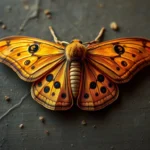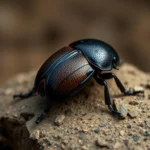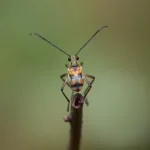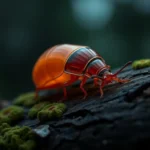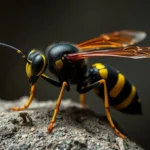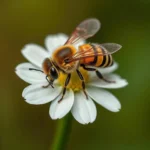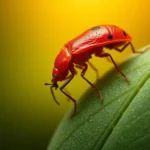The Hidden Significance of the Asian Cockroach
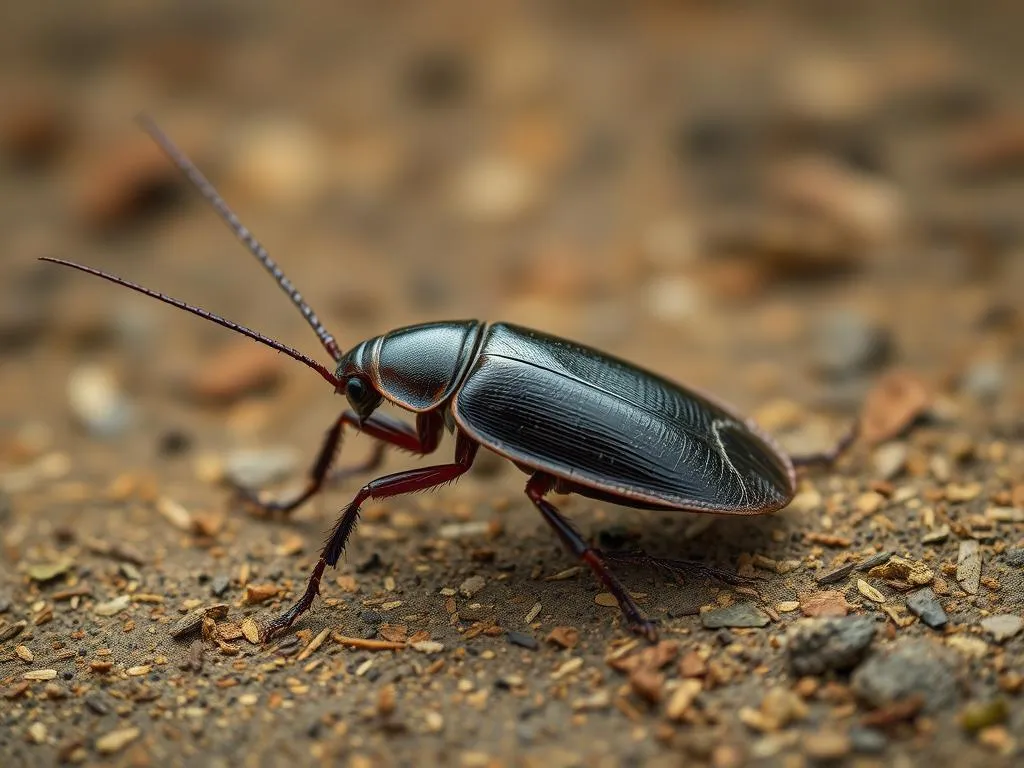
Disclaimer: Some images on this website are AI-generated artworks and may not accurately represent real animals.
The Asian cockroach (Blattella asahinai) is often viewed through a lens of disdain and fear, primarily due to its classification as a pest. However, beneath this exterior lies a fascinating creature with rich symbolism and meaning that can offer insights into resilience, adaptability, and transformation. This blog post will delve into the world of the Asian cockroach, exploring its biological characteristics, cultural significance, and the deeper meanings associated with its existence.
Understanding the Asian Cockroach
Scientific Classification
The Asian cockroach belongs to the order Blattodea, and its taxonomy is as follows:
| Classification | Details |
|---|---|
| Kingdom | Animalia |
| Phylum | Arthropoda |
| Class | Insecta |
| Order | Blattodea |
| Family | Ectobiidae |
| Genus | Blattella |
| Species | Blattella asahinai |
Physically, the Asian cockroach resembles its more notorious cousin, the German cockroach. With a light brown hue and two dark stripes running lengthwise on its pronotum, it can be identified by its long, slender body and wings that allow it to fly. Adult Asian cockroaches are typically about 1.5 inches long, making them slightly larger than German cockroaches.
Habitat and Behavior
The Asian cockroach is predominantly found in subtropical and tropical regions, thriving in warm and humid environments. Unlike other cockroach species that prefer dark and damp corners, the Asian cockroach can often be seen basking in sunlight, showcasing its unique behavior. It is primarily nocturnal, yet it has been known to venture out during the day, especially when searching for food or mates.
These cockroaches are also adept at flight, which distinguishes them from many other species. This ability allows them to escape predators and navigate through varied environments efficiently. Their diet is omnivorous, feeding on decaying organic matter, which positions them as crucial players in their ecosystems.
Cultural Presence
The cultural presence of the Asian cockroach varies significantly across different societies. In many cultures, cockroaches are viewed negatively, primarily seen as pests that invade homes and contaminate food. However, the Asian cockroach has also found its way into various cultural narratives, symbolizing survival and resilience.
In some Eastern cultures, insects, including cockroaches, can embody lessons related to persistence and endurance. The dual perception of the Asian cockroach as both a pest and a symbol of survival showcases the complexity of its representation in human thought.
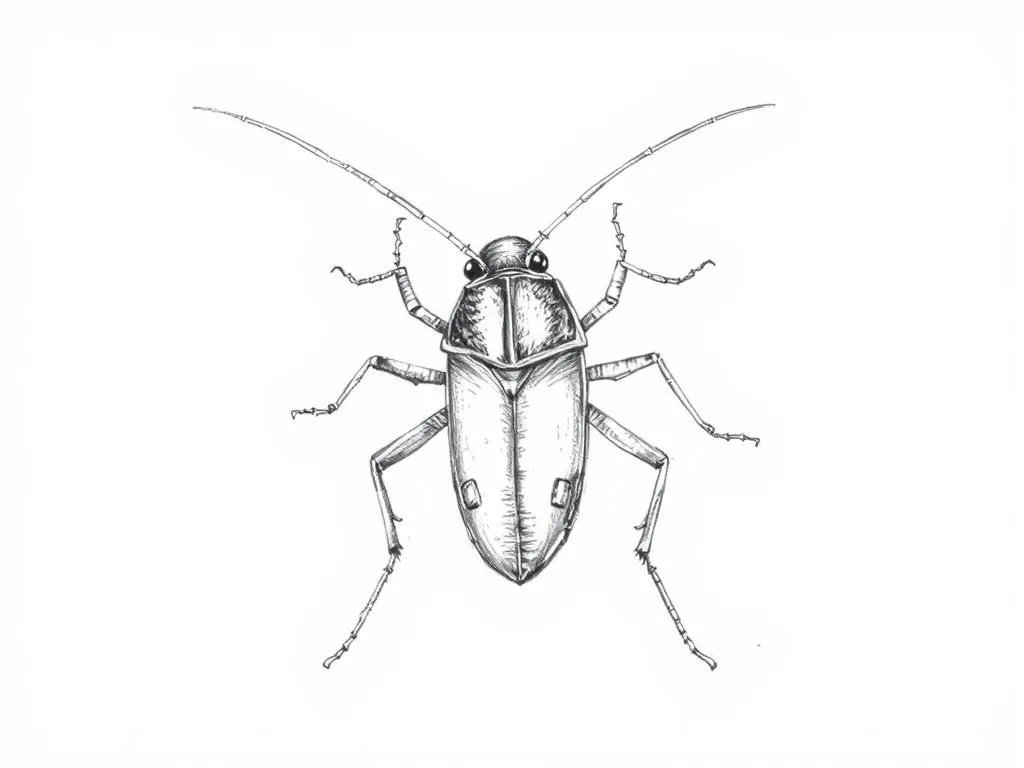
Symbolism & Spiritual Meaning
Resilience and Survival
One of the most profound symbolic meanings attributed to the Asian cockroach is resilience. These creatures are often seen as survivors, having existed for millions of years. Their ability to withstand extreme conditions and environments reflects the human capacity to endure hardships and adversity. Just as the Asian cockroach flourishes despite the odds, individuals can draw inspiration from its example, encouraging them to stay strong in challenging times.
Adaptability
The Asian cockroach also embodies adaptability. This species can thrive in a variety of habitats, showcasing its remarkable flexibility. In a rapidly changing world, the importance of adaptability cannot be overstated. The Asian cockroach serves as a reminder that embracing change and remaining flexible can lead to personal growth and success.
Transformation
Finally, the symbolism of transformation is closely linked to the Asian cockroach. The life cycle of a cockroach involves several molts before reaching adulthood. This process can be seen as a metaphor for personal growth, where individuals shed their old selves and embrace new identities. The Asian cockroach inspires those seeking transformation in their lives, encouraging them to embrace change as a pathway to personal development.
Asian Cockroach in Dreams
Common Dream Scenarios
Dreaming of the Asian cockroach can evoke a range of emotions, often tied to feelings of fear or disgust. However, analyzing these dreams can reveal deeper meanings. Here are some common scenarios associated with dreaming about cockroaches:
| Dream Scenario | Possible Interpretation |
|---|---|
| Seeing a cockroach in a clean home | Fear of loss of control or chaos |
| Cockroaches swarming | Feeling overwhelmed or anxious |
| Killing a cockroach | Overcoming challenges or fears |
| Cockroaches flying around you | Changes or unexpected developments |
| Finding cockroaches in food | Concerns about health or purity |
Interpretations
When one encounters the Asian cockroach in dreams, it may symbolize various aspects of their waking life. For instance, seeing a cockroach in a clean home could indicate an underlying anxiety about losing control over certain aspects of life. Meanwhile, killing a cockroach may represent a desire to confront and overcome obstacles or fears.
These interpretations can vary widely, depending on the dreamer’s personal experiences and emotions. The Asian cockroach, therefore, serves as a powerful symbol in the dream world, encouraging individuals to reflect on their feelings and circumstances.
Cultural Interpretations
Different cultures also interpret dreams involving cockroaches in unique ways. In some Eastern cultures, dreaming of cockroaches might be viewed as a sign of good fortune, suggesting that wealth or prosperity is on the horizon. Conversely, in Western cultures, cockroaches are typically associated with negativity, often seen as harbingers of anxiety or disturbance.
Understanding these varied interpretations can provide insight into how the Asian cockroach is perceived across different cultural landscapes, highlighting its multifaceted symbolism.
Modern Interpretations
Environmental Symbolism
In contemporary discourse, the Asian cockroach has emerged as a symbol in discussions about environmental sustainability. As creatures that thrive in urban ecosystems, they highlight the importance of biodiversity even in the face of human development. The Asian cockroach reminds us that life persists despite the challenges posed by urbanization and environmental change, urging us to consider our relationship with nature.
Cultural References
The portrayal of cockroaches in literature, media, and art often reflects societal attitudes towards these creatures. In many narratives, cockroaches are depicted as symbols of decay and corruption, representing the darker sides of human nature. Conversely, they can also embody themes of survival and resilience, reflecting the complexity of human experiences.
Through various cultural references, the Asian cockroach continues to inspire discussions about the duality of life, serving as a reminder of both vulnerability and strength.
Personal Empowerment
Drawing inspiration from the Asian cockroach can lead to personal empowerment. By recognizing the resilience and adaptability inherent in these creatures, individuals can cultivate a mindset of perseverance. Embracing the lessons learned from the Asian cockroach allows people to navigate life’s challenges with confidence, transforming obstacles into opportunities for growth.
Key Takeaways
- Resilience and Adaptability: The Asian cockroach exemplifies the importance of these traits in personal and spiritual development.
- Cultural Symbolism: Understanding the dual perception of the Asian cockroach as both a pest and a symbol of survival can enrich our view of these creatures.
- Dream Significance: Recognizing the messages conveyed by dreams involving the Asian cockroach can provide valuable insights into our waking lives.
Conclusion
The Asian cockroach holds a rich tapestry of symbolism and meaning that extends far beyond its reputation as a mere pest. Its embodiment of resilience, adaptability, and transformation offers valuable lessons for those willing to explore its significance. As we reflect on the multifaceted symbolism of the Asian cockroach, we are encouraged to embrace our own journeys of personal growth and transformation. By examining our perceptions and experiences, we can uncover the hidden significance that lies within not just the Asian cockroach, but within ourselves.
